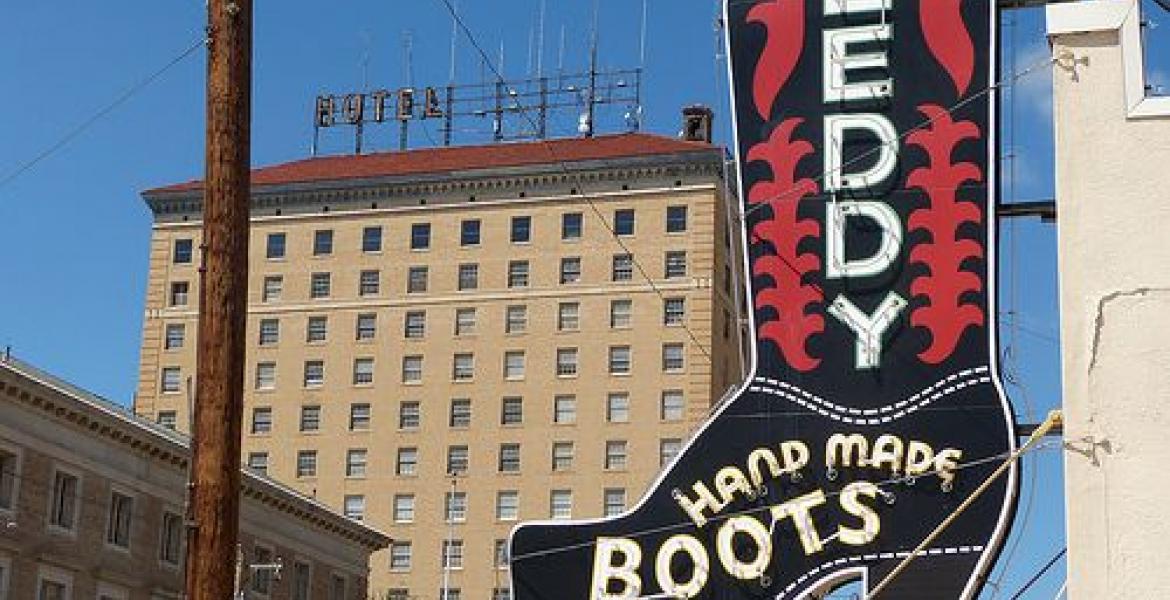Over the next 10 years, Texas shale formations are projected to produce up to 1/3 of the global oil supply says a professor who is studying it. Currently, Texas ranks 10th in the world in oil production, with the Eagle Ford oil fields in South Texas and oil fields mainly west of San Angelo, the Cline Shale and the Wolfcamp, producing two million barrels of oil per day combined, according to Gene Lockhard at RigZone.
“We gave up trying to track the Cline Shale alone,” said Dr. Tom Tunstall of the University of Texas at San Antonio Institute of Economic Development. “In many cases a drill site has both Cline and Wolfcamp Shale under it.”
He explains that determining which particular shale the black gold is flowing from would take a team of geologists and significant time for research efforts.
“Permian, overall, is producing more than the Bakken (in North Dakota),” said Tunstall.
Just Wolfcamp alone is projected to contain five billion barrels of oil. Should the price of oil stay near $100 dollars per barrel, one-half a trillion dollars worth of oil is trapped within the shale.
“It was estimated Eagle Ford might have an estimated 10 billion barrels, Tunstall explained. That's $1 trillion at $100 per barrel.
“Arthur Berman (a prominent petroleum geologist) doesn’t think shale is sustainable,” Tunstall mentioned, “but I think the production numbers are starting to speak for themselves.”
All the shale plays in the United States have drastically increased the amount of oil produced.
“The United States now produces more than we import,” Tunstall stated. “That hasn’t happened since ’95.”
This greatly impacts those who import oil into the United States.
“OPEC is worried,” Tunstall explained. “For a long time they denied it (shale play) was real.”
The producers affected the most are the West African producers of light, sweet crude.
“I really thought the U.S. and Texas had seen our last oil boom in the late '70s,” he said. “That turned out to be obviously wrong; it’s fun to watch it happen again.”
Tunstall thinks that people don’t fully appreciate how much of an economic impact is being generated throughout West Texas.
“Based on what I see, there are lots of other possibilities in the world and we’re certainly not done in West Texas,” he said.
Of course West Texas is not the only area in the world with shale. Countries like China, Argentina and even parts of Europe have large shale formations waiting to be tapped.
However, populations camped out on top of formations and the lack of privately-owned companies that have the technology to access the difficult-to-reach oil have made it nigh impossible for other countries to join in the shale plays.
Tunstall explains that the lack of innovation, government systems and land laws have put other countries behind.
“In America the oil company makes a deal to lease land from a land owner and the deal is done,” he stated. “You don’t have to negotiate with a dictator or king or state.”
Tunstall also explains that once other countries do get on board, the U.S. would then be able to export technology and skilled labor at a high rate.
As for right now though, shale plays are just getting started in Texas. Everything from bigger cities to smaller communities are seeing an influx of industry and workers.
“One of the most interesting things about oil and gas developments is [that] the effects aren’t always uniform,” he explained. “Some cities are better prepared.”
Tunstall cites cities with good infrastructure, housing and good governing bodies as the ones best able to take on the influx of new industry and employees.
Communities able to create attractive and productive environments are the ones that benefit the most during the surge of industry and feel it the hardest as industry moves on.
“Why would somebody want to live here?” posed Tunstall as a question a community should ask itself. The reason being that a community who can’t answer that question won’t be able to draw anyone but industry workers.
“My hope is that they will be able to attract housing developers and other reasons for people to live there,” said Tunstall.
A rapidly growing concern is and will continue to be water, or rather the lack thereof.
There are 26 million people in Texas right now, and by 2060 that number is expected to grow to as many as 47 million.
“I was glad to see the voters approve the $2 billion package to fund water studies and projects,” said Tunstall, referring to Proposition 6 that was approved by Texas voters in Nov. 2013. “We’re going to need more water and to identify where those sources are coming from.”
Voters agreed to take $2 billion out of the state's rainy day fund and build a separate fund to finance water projects throughout the state. Tunstall worries that a one time $2 billion set-aside may not be enough, and believes that the legislature should add to the fund on a recurring basis.
“It’s up to legislature to decide what to do with it--they did this last time, but there’s no guarantee in the future.”
He also mentioned that even if it starts raining now, the problems are not over.
“We may get through this drought, but sooner or later, we’re going to see another drought,” he said.
One avenue Tunstall believes may have merit is using energy gained from shale plays to run desalinization plants that remove salt from water drawn out of the Gulf of Mexico.
“It’s an expensive process,” he explained. “We have relatively inexpensive energy with natural gas, so that’s a good avenue.”
Tunstall reiterates that it is important that the Texas Legislature continues to finance water acquisition projects.
Currently, the UTSA Economic Development group is working on the Cline Shale Impact Study.
“We are working on the county level impacts right now,” said Tunstall. That phase of the study should be available by May or early summer.
He explains that the most important things for communities are an attractive and productive environment and a diversified economy.
“Geographical spacing presents a challenge for diversification,” Tunstall stated. “Midland and Odessa have looked to diversify, but if they will be successful is another story.”
All in all, cities with good governance, infrastructure and housing markets are in line to benefit from the oil surge.
Dr. Tunstall will be visiting San Angelo on Feb. 9 to meet with the Desk and Derrick Club.
Subscribe to the LIVE! Daily
Required






Post a comment to this article here: